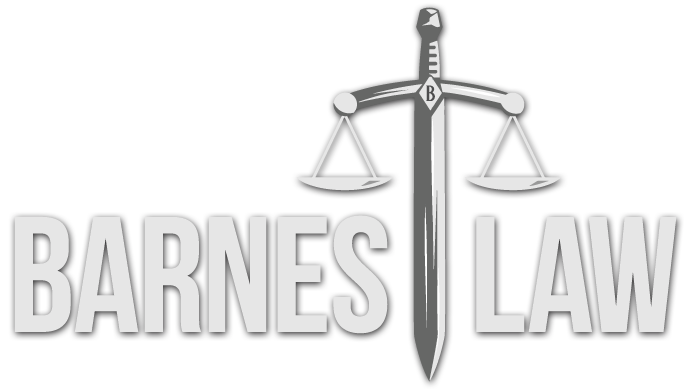THE TERRY DOCTRINE PART 2: WARRANTLESS FRISKS & SEIZURES
Before reading this, I highly suggest reading the first part of this two-part series called “The Terry Doctrine, Part 1: Warrantless Frisks & Seizures,” where I’ve explained what the Terry Doctrine is and how it is justified under the law.[1] In short, the Terry Doctrine allows police officers to stop individuals if they have reasonable suspicion that the individual has committed or is committing a crime, notably without a warrant. Police officers can also frisk the outer clothing of individuals they have stopped if they have reasonable suspicion that the individual is armed and dangerous, again, without a warant. In this part, I’ll discuss the allowable scope of Terry stops and Terry frisks; in other words, what police officers can and cannot do by law under the Terry Doctrine. First off, a Terry stop is a seizure within the meaning of the Fourth Amendment. Thus, it is lawful only if the police have reasonable suspicion that the individual has committed or is committing a crime, as it is a seizure without an arrest warrant. However, even with reasonable suspicion, the individuals cannot be detained for an indefinite amount of time. Any seizure that continues after the seizure has become “too long” based on reasonable suspicion, has become a de facto arrest (illegal seizure). Thus, the stop can only be for as long as reasonably necessary for the police to confirm or dispel their suspicion. It is worth noting that there is no bright-line time limit for a stop, as it depends on the circumstances underlying the stop. Like all evidence obtained illegally, any evidence obtained after the point a stop becomes “too long” is subject to suppression under the exclusionary rule.
Courts have extended this governmental authority to stop individuals without a warrant to also allow police officers to lawfully conduct an investigation that is unrelated to the purpose of the initial stop or seizure, if the investigation does not prolong the detention based on what the original stop was for. For example, while one officer wrote a traffic ticket, another officer walked a drug dog around the car.[2] Since walking the drug dog around the car did not take longer than the officer to finish writing the ticket, the detention was legal. However, courts do not always side with the government and have found certain seizures to be excessive under the circumstances. For example, a 45-minute delay was found to be excessive where it was based solely on reasonable suspicion, because police seized the defendant’s luggage and took it to another airport where drug dogs were present.[3] The U.S. Supreme Court has looked at several factors to determine whether a seizure was outside the scope of a Terry stop including but not limited to: 1) the duration of the detention, 2) whether there was a formal custodial interrogation, 3) whether the individual was moved from the place of the seizure, and 4) whether the individual was taken to a police station.[4] Like I said, the scope of a Terry stop really depends on the circumstances.
During a Terry stop, if the police officer has reasonable suspicion that the detained individual is armed and dangerous, the officer may frisk the outer clothing for guns, knives, and clubs only. This frisk or search is limited to what is necessary to discover weapons. Keep in mind that the officer may only frisk the outer clothing, but cannot search the inside of pockets or the inside of the clothing. A Terry frisk is justified as necessary to protect police officers and nearby citizens from imminent harm. Thus, the scope is whatever is necessary to determine if the individual has a gun, knife, or a club by only patting down the outside of the individual’s clothing. However, a Terry frisk may not be used to search for evidence such as illegal drugs, even if the police officer has reasonable suspicion that the individual is in possession of illegal drugs. As stated above, the justification for the frisk is only to protect police officers and nearby citizens; thus, that is what the allowable scope of the risk is limited by. For instance, a police officer’s continued exploration of an individual’s pocket after having conclude that it contained no weapons, was found to be unrelated to the sole justification of the frisk, and any evidence obtained as a result of that “search” was excluded.[5] However, it is important to remember that as long as an officer’s conduct does not exceed the scope of the frisk necessary to determine if suspect is armed, any drugs found during that search is admissible. For example, drugs that inadvertently come out while pulling out a toy gun from a suspect’s pocket is admissible. As a final note, always remember that justification for a Terry stop might not be justification for a Terry frisk.
After reading both Part 1 and Part 2 regarding the Terry Doctrine, you will probably realize that there is no bright-line rule as to what the government is and is not allowed to do during Terry stops and Terry frisks, as the allowable scope of both depends on the circumstances. If you or someone you know has been detained and/or frisked without a warrant and now has evidence being used against him or her as a result, contact a competent civil rights attorney immediately to determine the legality of the government’s conduct. If the evidence is found to have been obtained illegally, it will likely be excluded from trial. Know your rights!
--By Ara M. Baghdassarian is an associate attorney with Barnes Law, licensed to practice law in California.
[1] http://www.barneslawllp.com/terry-doctrine-part-1-warrantless-stop-frisk/
[2] Illinois v. Caballes, 543 U.S. 405 (2005); https://www.law.cornell.edu/supct/html/03-923.ZO.html
[3] United States v. Place, 462 U.S. 696 (1983); https://supreme.justia.com/cases/federal/us/462/696/case.html
[4] Dunaway v. New York, 442 U.S. 200 (1979); https://supreme.justia.com/cases/federal/us/442/200/case.html
[5] Minnesota v. Dickerson, 508 U.S. 366 (1993); https://www.law.cornell.edu/supct/html/91-2019.ZO.html
